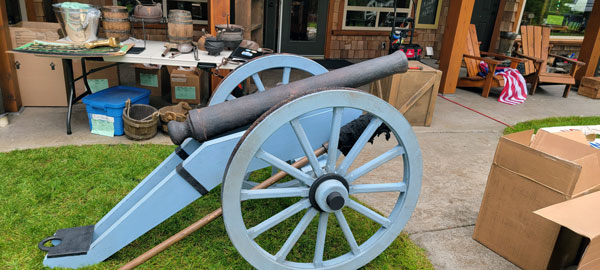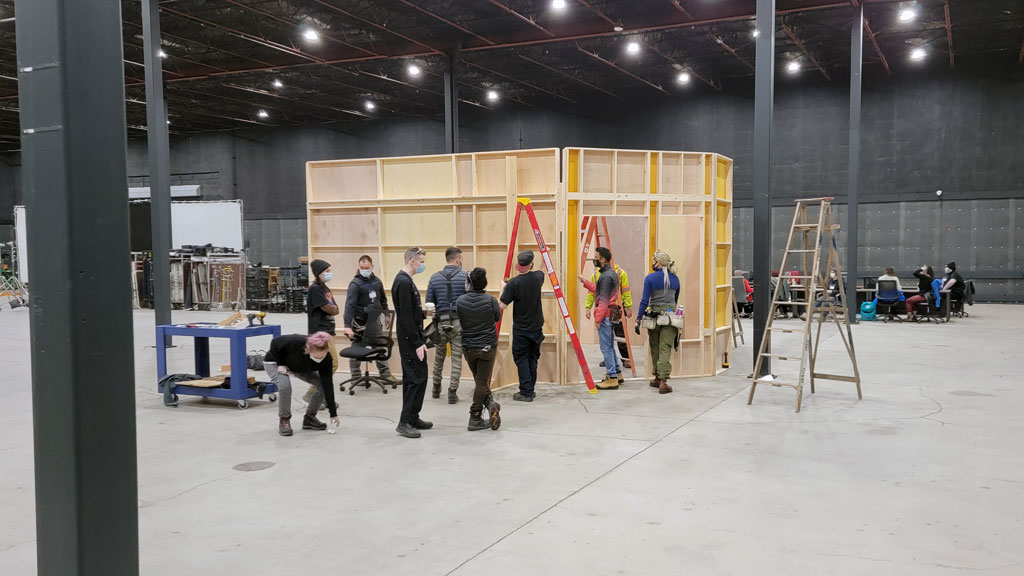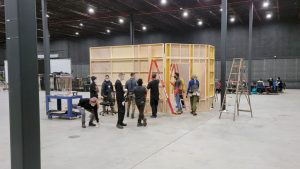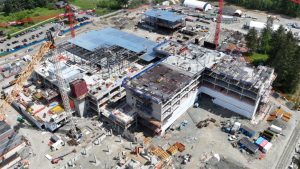The B.C. film industry needs construction workers to build sets for film and television.
Hal Keown, a set construction veteran working with North Island College (NIC) on Vancouver Island, is sharing his expertise to instruct students in a 12-week tuition-free microcredential program designed to get his students hired for local productions.
NIC offers students a suite of eight motion picture training programs, including microcredentials in craft services, electric lighting and motion picture accounting. Keown has taught the program for four years as it gained traction, with studios including Netflix, Warner Bros. and SONY now recognizing its graduates.
He’s been a carpenter for 39 years, entering apprenticeship at age 17 in Edmonton.
“I was building engineered homes, doing sub-floors and framing,” he says. “I moved to B.C. in 1988 and somebody suggested I turn my carpentry skills to the film industry, which I did.”
Keown started off building “picture cars” to blow up on screen, but soon found himself working on a slate of programs that included the original MacGyver and 21 Jump Street.
His crews built the sets for the Sonic the Hedgehog movie and TV’s Riverdale series. He spent six seasons on the set of Hallmark series Chesapeake Shores. Over his career, he’s built lighthouses, tree forts, cannons, planes, trains and spaceships.
However, he notes construction workers practicing traditional carpentry need to adjust their construction methods to suit the medium.

“We have Red Seal carpenters in the program who are trying to build structurally and we have to explain to them that they need a different mindset,” he says. “We need to build fast and we need to build light. The bulk of what we do in set construction involves 1X4s and ribbon mahogany sheets or vacuum-formed panels for skins.”
Most of the wooden elements are glued, stapled or power-nailed into place. The skins are then dressed to look like brick, metal or plaster. Keown’s toolkit includes more than 100 different types of power nailers and staple guns.
Keown recalls working on the TV series Bordertown, which required a four-month commitment building the main street of a circa 1910 western town. The job involved building roofs with cedar shakes and stacking logs to create exterior walls. However, the town couldn’t look brand new. All of the cedar, for example, was sprayed with silver nitrate to prematurely age it.
“We were building roofs that sagged in the middle and then installing rain barrels that were supposed to act as fire suppression systems,” he says. “One day, a safety inspector tried to red flag our project for failing to meet the building code and we had to kindly ask him to leave the set.”
The NIC construction course typically takes up to 24 students per session and is led by two instructors. Some of the applicants are seasoned construction workers, while others are neophytes with an aptitude.
At the conclusion of the course, students from the construction, grip and electric programs team up to film a mini-movie. Graduates also receive certificates for forklift operation and working on aerial platforms, and WorkSafeBC Occupational First Aid Level One.
“In the entire history of the course, I only told two students that their future was not with a film construction department,” he recalls. “But I told them to apply to the paint department and they’re both rock stars in that specialty.”
Keown notes set construction workers generally remain in high demand, although a recent Hollywood writer’s strike has delayed many of the projects that might otherwise be in production. Activity is expected to pick up later this summer.
For those students who are starstruck, Keown has disappointing news. Set builders are among the first to arrive on the set and the last to leave. However, they leave a lasting impression with the work they do.
“You can build things you never thought were possible, go to the movies or turn on the television, point to the screen and tell others, ‘I built that’” he says.






Recent Comments